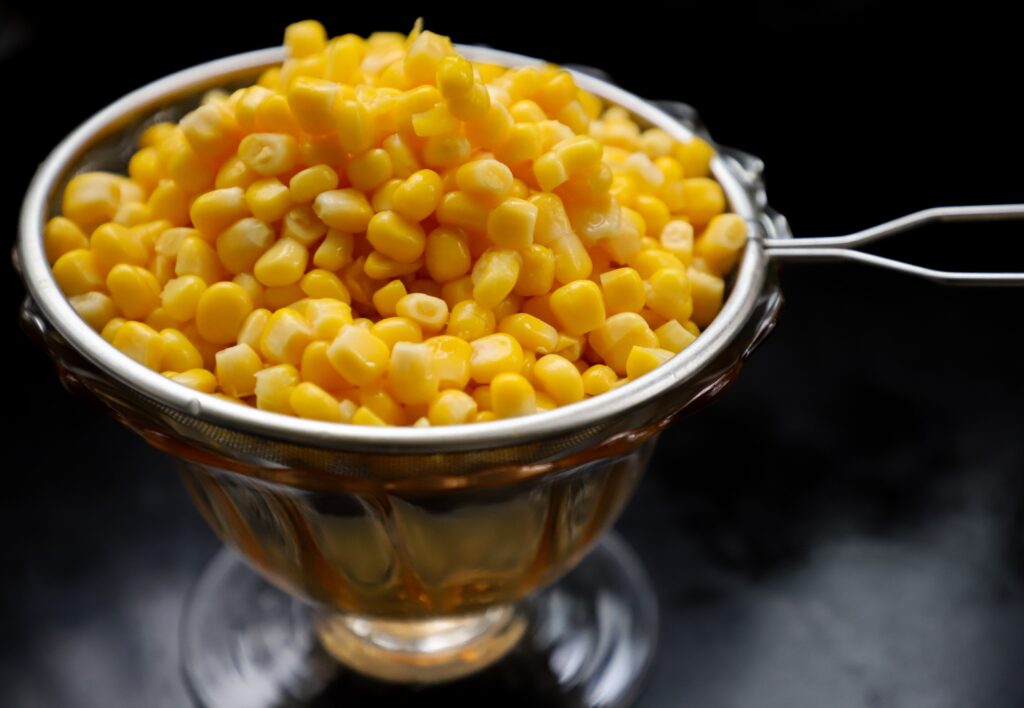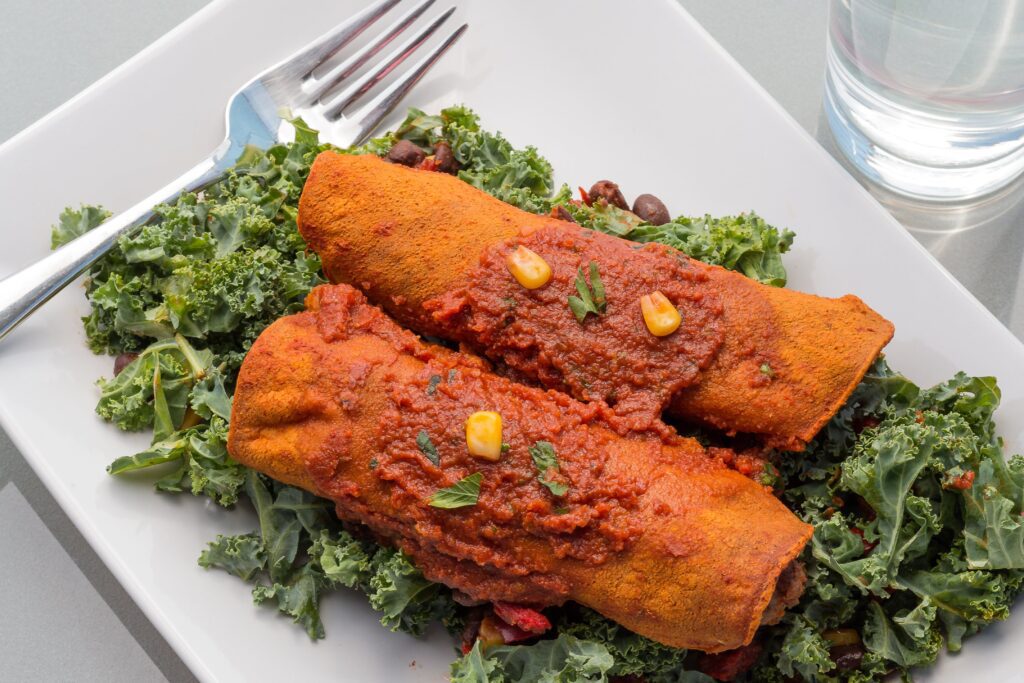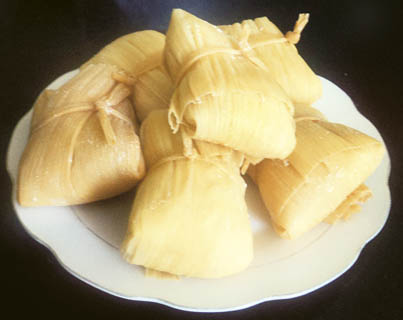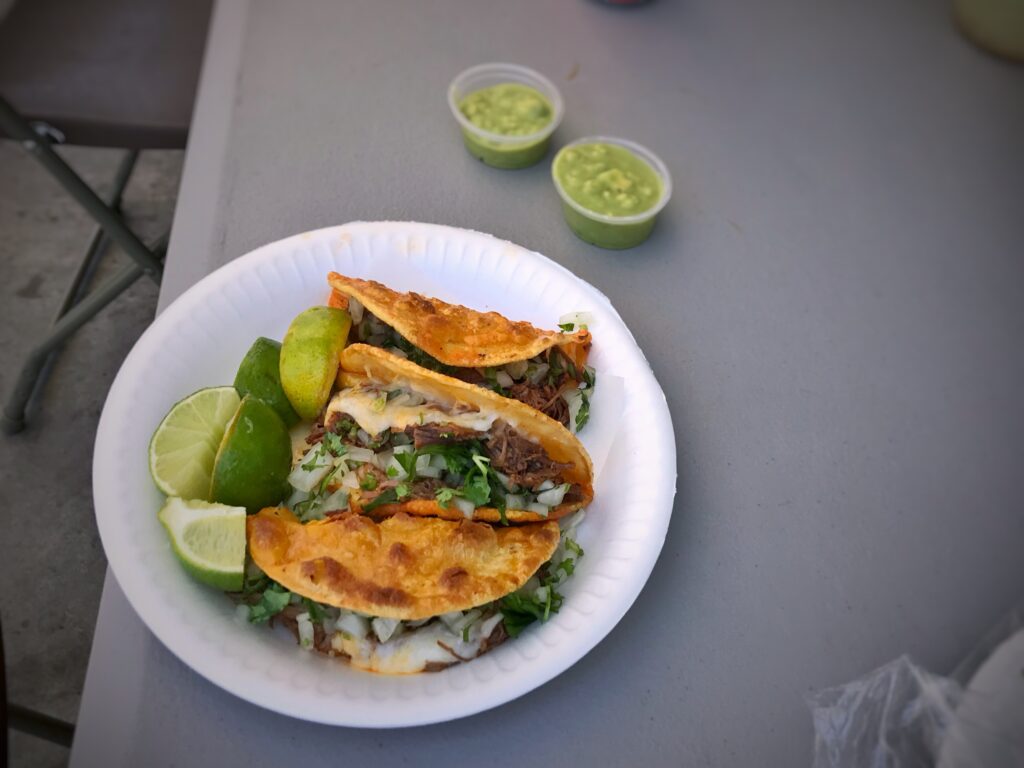What Is Mexico Food? Introduction
What is Mexican cuisine?
Mexican cuisine refers to the diverse and flavorful culinary traditions of Mexico. It is known for its vibrant flavors, rich spices, and unique ingredients that have been influenced by both indigenous and European cultures. Mexican cuisine is characterized by a wide variety of dishes, including tacos, enchiladas, tamales, and guacamole. It is popular worldwide and has gained recognition for its use of fresh and local ingredients.
Historical background of Mexican cuisine
Mexican cuisine has a rich historical background that dates back thousands of years. It can be traced back to the ancient civilizations of the Aztecs and Mayans, who cultivated ingredients such as corn, beans, chili peppers, and tomatoes. These ingredients continue to be staples in Mexican cuisine today.
The arrival of the Spanish in the 16th century had a significant impact on Mexican cuisine. The Spanish brought new ingredients such as rice, wheat, and various herbs and spices. They also introduced cooking techniques such as frying, baking, and simmering. The fusion of indigenous and European flavors resulted in the creation of unique dishes and flavors that are characteristic of Mexican cuisine.
Over the centuries, Mexican cuisine has continued to evolve and incorporate influences from other cultures. The French, for example, introduced pastries and bread, while Asians brought new spices and techniques. Mexican cuisine also showcases regional variations, with each area having its own specialties and culinary traditions.
In conclusion, Mexican cuisine is a vibrant and diverse culinary tradition that has evolved over thousands of years. It is characterized by its use of fresh and local ingredients, rich spices, and unique flavors. Mexican cuisine reflects the country’s history, culture, and diverse culinary influences. Whether it’s street food or fine dining, Mexican cuisine continues to captivate taste buds around the world.
Mexican Food Staples
Corn: The foundation of Mexican cuisine
Corn is a staple ingredient in Mexican cuisine and has been a part of the country’s culinary traditions for thousands of years. It is the foundation of many iconic dishes, such as tortillas, tamales, and pozole. Corn is not only used as a main ingredient but also in various forms, such as masa (maize dough) and cornmeal. This versatile ingredient adds texture, flavor, and nutrition to Mexican dishes.
- Corn is indigenous to Mexico and has been cultivated by the ancient civilizations of the Aztecs and Mayans.
- It is used to make tortillas, which are a fundamental part of Mexican cuisine. Tortillas can be filled with various ingredients to make tacos, quesadillas, and enchiladas.
- Masa, which is made from ground corn soaked in an alkaline solution, is used to make tamales, a traditional Mexican dish wrapped in corn husks and steamed.
- Cornmeal is used to make a variety of dishes, including sopes, gorditas, and atole, a hot corn-based beverage.


Beans: A protein-packed essential
Beans are another essential ingredient in Mexican cuisine and are often paired with corn to create a complete protein. They are versatile and can be used in various forms, such as refried beans, whole beans, or pureed into sauces and dips. Beans provide essential nutrients and are a source of fiber, making them a healthy addition to Mexican dishes.
- Beans have been cultivated in Mexico for thousands of years and were an important source of protein for ancient civilizations.
- Traditional Mexican dishes like frijoles refritos (refried beans) are made by simmering cooked beans in oil or lard and adding seasonings.
- Whole beans, such as black beans, pinto beans, and kidney beans, are often used in stews, soups, and rice dishes.
- Beans can also be pureed to make sauces like the classic black bean dip or the popular refried beans.
In conclusion, corn and beans are two staple ingredients in Mexican cuisine. Corn serves as the foundation of many dishes, providing texture and flavor, while beans add protein and essential nutrients. These ingredients reflect the historical and cultural significance of Mexican cuisine and continue to play a vital role in creating flavorful and satisfying dishes.
Popular Mexican Dishes
Tacos: The epitome of Mexican street food
Tacos are one of the most popular and beloved dishes in Mexican cuisine. They are the epitome of street food and can be enjoyed in various styles and flavors. Tacos consist of a tortilla filled with a variety of ingredients, such as grilled meats, vegetables, cheese, and salsa. They are often garnished with cilantro, onions, and a squeeze of lime for added freshness. Here are some key points about tacos:
- Tacos are a versatile dish that can be customized to individual preferences. They can be made with different types of tortillas, including corn or flour, and filled with a wide range of ingredients.
- Some popular types of tacos include carne asada (grilled beef), al pastor (marinated pork), fish tacos, and vegetarian options like roasted vegetables or grilled tofu.
- Tacos are typically served with a side of salsa or hot sauce, allowing diners to adjust the level of spiciness according to their taste.
- They are consumed in a casual setting, often enjoyed from food stalls or trucks known as “taquerias.” Tacos are a go-to option for quick and flavorful meals on the go.
Enchiladas: A flavorful and versatile Mexican favorite
Enchiladas are another iconic dish in Mexican cuisine that combines flavorful fillings, tortillas, and delicious sauces. They are typically made by rolling tortillas around a filling, such as shredded chicken, cheese, or beans, and then smothering them in a savory sauce. Here are some key points about enchiladas:
- Enchiladas can be filled with a variety of ingredients, making them a versatile option for different tastes and dietary preferences. Popular fillings include chicken, beef, cheese, and vegetables.
- The sauces used in enchiladas vary from region to region in Mexico. Some common options include red enchilada sauce made from dried chili peppers or salsa verde made from tomatillos and green chili peppers.
- Enchiladas are often topped with additional cheese, onions, and sometimes sour cream or guacamole for added creaminess and freshness.
- They are typically baked in the oven until the tortillas are slightly crispy and the fillings are heated through.
In summary, tacos and enchiladas are two popular and beloved dishes in Mexican cuisine. Tacos exemplify the vibrant street food culture, offering endless flavor combinations, while enchiladas showcase the versatility of fillings and sauces. Both dishes have become staples not only in Mexico but also around the world, thanks to their delicious taste and rich culinary heritage.


Regional Mexican Cuisines
Northern Mexico: Grilled meats and flavorful stews
Northern Mexico is known for its hearty and flavorful cuisine, featuring a variety of grilled meats and rich stews. Here are some key highlights of Northern Mexican cuisine:
- Carne Asada: Grilled beef is a staple in Northern Mexican cuisine. It is often seasoned with a combination of spices, lime juice, and garlic, then grilled to perfection. Carne asada can be enjoyed in tacos, burritos, or as a main dish with sides like rice and beans.
- Birria: This is a traditional Mexican stew made with beef or goat meat. It is slow-cooked for hours with a blend of spices, including chili peppers, garlic, and various herbs. Birria is often served with tortillas, chopped onions, and cilantro.
- Machaca: This is a popular dish made with dried and shredded meat, usually beef or pork. The meat is rehydrated and then cooked with onions, tomatoes, and spices. Machaca is commonly enjoyed in breakfast burritos or tacos.
Oaxacan Cuisine: Rich mole sauces and unique ingredients
Oaxaca, located in southern Mexico, is famous for its rich and complex flavors. Oaxacan cuisine is known for its use of unique ingredients and flavorful mole sauces. Here are some key highlights of Oaxacan cuisine:
- Mole: Oaxaca is considered the birthplace of mole sauce, which is a complex blend of chili peppers, nuts, seeds, spices, and chocolate. It is used to create exquisite dishes like mole negro (black mole) or mole verde (green mole).
- Tlayudas: These are large, crispy tortillas that are topped with beans, Oaxacan cheese, meat, and vegetables. Tlayudas are often compared to pizzas due to their size and variety of toppings.
- Chapulines: This unique ingredient is dried grasshoppers. They are often seasoned with chili powder, salt, and lime juice, and eaten as a snack or incorporated into dishes like tacos or quesadillas.
In conclusion, Mexico’s regional cuisines offer a diversity of flavors and food traditions. From the grilled meats and stews of Northern Mexico to the rich mole sauces and unique ingredients of Oaxaca, each region has its own culinary heritage to offer. Exploring the regional cuisines of Mexico is a delightful way to experience the country’s culture and food traditions.
Traditional Mexican Ingredients
Chiles: The spice of Mexican cuisine
Chiles are an essential ingredient in Mexican cuisine, adding heat and flavor to dishes. There are various types of chiles used in Mexican cooking, each with its own unique taste profile. Here are some popular chiles used in Mexican cuisine:
- Habanero: Known for its intense heat, habanero chiles are often used in salsas or as a marinade for meats.
- Poblano: These mild chiles are commonly used for making chiles rellenos, a popular stuffed pepper dish.
- Jalapeño: Jalapeños are a staple in Mexican cuisine, used in salsas, pickled, or sliced as a topping.
- Chipotle: Chipotle chiles are smoked and dried jalapeños, adding a smoky flavor to dishes like adobo sauce.
- Serrano: Serrano chiles are hotter than jalapeños and are commonly used in salsas and guacamole.
Avocado: A versatile and ubiquitous ingredient
Avocado is a beloved ingredient in Mexican cuisine, known for its creamy texture and rich flavor. It is used in a variety of dishes and condiments. Here are some popular uses of avocado in Mexican cooking:
- Guacamole: Guacamole is a classic Mexican dip made with mashed avocados, lime juice, onions, tomatoes, and spices. It is commonly served with tortilla chips or as a topping for tacos and burritos.
- Tacos: Sliced or mashed avocado is a common topping for tacos, adding creaminess and a touch of freshness.
- Salads: Avocado often finds its way into Mexican salads, adding a healthy dose of good fats and a creamy element.
- Salsas: Avocado can be blended with other ingredients to create creamy salsas, perfect for dipping or topping grilled meats and seafood.
In Mexican cuisine, chiles and avocado play significant roles in adding flavor and depth to dishes. Whether you crave spicy heat or creamy richness, these ingredients are fundamental to the authentic taste of Mexican cuisine.
Mexican Street Food
Tamales: A beloved Mexican street food staple
Tamales are a popular Mexican street food that has been enjoyed for generations. These delicious treats are made from masa dough filled with various savory or sweet fillings, wrapped in corn husks, and steamed to perfection. Here are some key features of tamales:
- Versatility: Tamales can be filled with a variety of ingredients, such as shredded chicken, pork, cheese, beans, or even sweet fillings like chocolate or fruit. This versatility makes them suitable for any taste preference.
- Portability: Tamales are highly portable and easy to eat on the go. They are often sold from street carts or food stalls, wrapped in corn husks or banana leaves and served in small portions.
- Traditional preparation: Making tamales is a labor-intensive process that involves soaking and grinding corn kernels to make masa dough, preparing fillings, assembling the tamales, and steaming them until cooked through. This traditional preparation method adds to the authentic taste and texture of the dish.
- Flavorful toppings: Tamales are typically served with a variety of toppings, such as salsa, sour cream, chopped onions, and cilantro. These toppings add extra layers of flavor to the already delicious tamales.


Elote: The iconic Mexican street corn snack
Elote, also known as Mexican street corn, is a beloved snack that can be found on street corners throughout Mexico. It consists of a grilled ear of corn that is slathered in a mix of mayonnaise, chili powder, cheese, and lime juice. Here are some highlights of elote:
- Grilled goodness: The corn is first grilled to perfection, giving it a smoky and slightly charred flavor that pairs perfectly with the toppings.
- Creamy and tangy: The mayonnaise and lime juice combination creates a creamy and tangy dressing that coats the corn, adding richness and a hint of acidity.
- Bold and savory: The chili powder and cheese provide a savory and slightly spicy kick to the elote, enhancing the flavors of the corn and the dressing.
- On-the-go snack: Elote is often served on a stick for easy eating while walking or standing. It is a popular snack for street food lovers who want a quick and satisfying bite.
Mexican street food offers a wide array of flavors, textures, and culinary experiences. Whether you enjoy the comforting taste of tamales or the bold flavors of elote, these street food favorites are sure to delight your taste buds and immerse you in the vibrant food culture of Mexico.
Mexican Beverages
Tequila: The world-renowned Mexican spirit
Tequila is a popular Mexican beverage that has gained worldwide recognition for its distinct flavor and versatility. Here are some key features of tequila:
- Variety: Tequila is made from the blue Weber agave plant and comes in different types, including Blanco (silver), Reposado (aged), and Añejo (extra aged). Each type has its own unique characteristics, ranging from the crisp and agave-forward flavors of Blanco to the smooth and complex notes of Añejo.
- Mixology: Tequila is widely used in various cocktails, such as the classic Margarita, Paloma, and Tequila Sunrise. Its vibrant flavors blend well with other ingredients, resulting in refreshing and flavorful drinks.
- Cultural significance: Tequila holds a special place in Mexican culture and is often enjoyed during celebrations and gatherings. The traditional way to enjoy tequila is by sipping it slowly, allowing the flavors to unfold and appreciate the craftsmanship behind this iconic spirit.
Agua frescas: Refreshing fruit-infused drinks
Agua frescas are popular non-alcoholic beverages that offer a refreshing and hydrating option in Mexican cuisine. Here are some highlights of agua frescas:
- Fruit-infused flavors: Agua frescas are made by blending fresh fruits, such as watermelon, pineapple, mango, or cucumber, with water and sometimes a touch of sugar. The result is a light and flavorful drink that showcases the natural sweetness and freshness of the fruits.
- Cooling effect: Agua frescas are served chilled or over ice, making them a perfect thirst-quencher on hot summer days. The combination of fruit and water provides a cooling sensation that helps beat the heat.
- Customizable: Agua frescas are highly customizable, allowing you to experiment with different fruits and flavor combinations. You can also add a splash of lime juice or mint leaves for an extra burst of freshness.
- Health benefits: Agua frescas are a healthier alternative to sugary sodas or artificial drinks. They are packed with vitamins and minerals from the fruits, making them a great choice for those looking for a refreshing and nutritious option.
Mexican beverages offer a wide range of flavors and options to quench your thirst and complement the vibrant Mexican cuisine. Whether you prefer the boldness of tequila or the refreshing goodness of agua frescas, these beverages are an integral part of the Mexican culinary experience.
Mexican Desserts
Flan: A classic Mexican caramel custard
Flan is a beloved Mexican dessert known for its creamy texture and sweet caramel flavor. Some key features of flan include:
- Traditional recipe: Flan is made by combining eggs, condensed milk, and vanilla essence to create a custard-like mixture. It is then baked in a water bath and chilled before being served with a rich caramel sauce.
- Silky smooth texture: Flan has a smooth and velvety texture that melts in the mouth. The combination of eggs and condensed milk gives it a luxurious consistency that is both satisfying and indulgent.
- Caramelized sweetness: The caramel sauce that accompanies flan adds a rich and sticky sweetness to the dessert. It is made by melting sugar until it turns golden brown and then pouring it into the baking dish before adding the custard mixture.
- Versatile flavors: In addition to the traditional vanilla-flavored flan, there are variations that incorporate other flavors such as coconut, coffee, or chocolate. These variations add a unique twist to the classic dessert, appealing to different taste preferences.
Churros: Crispy fried dough with cinnamon sugar
Churros are a popular Mexican treat loved for their crispy exterior and soft, doughy interior. Here’s what you need to know about churros:
- Fried dough perfection: Churros are made by piping a dough mixture made with flour, water, and salt through a star-shaped nozzle and then deep-frying them until they are golden brown and crispy. The result is a deliciously satisfying treat with a delightful crunch.
- Cinnamon sugar coating: After frying, churros are typically tossed in a mixture of cinnamon and sugar, adding a fragrant and sweet coating to the already irresistible snack. This combination of flavors adds an extra dimension to the churros, making them even more enjoyable.
- Dipping sauces: Churros are often served with a variety of dipping sauces, such as rich chocolate sauce, dulce de leche, or sweetened condensed milk. These sauces complement the churros’ texture and enhance their taste, creating a delightful combination of flavors.
- Versatility: Churros come in different shapes and sizes, from the classic long and thin sticks to loops and even filled varieties. They can be enjoyed on their own as a snack or served as a dessert accompanied by ice cream or other sweet accompaniments.
Mexican desserts offer a delectable end to any meal, with flan’s creamy texture and caramel sweetness and churros’ crispy dough and sugary coating. These desserts showcase the richness and variety of flavors in Mexican cuisine, leaving you satisfied and craving for more.
Conclusion
Mexican cuisine: A vibrant and diverse culinary tradition
Mexican cuisine is renowned for its vibrant flavors, diverse ingredients, and rich culinary traditions. From savory dishes like tacos and enchiladas to sweet treats like flan and churros, Mexican food offers a unique and satisfying dining experience. The use of spices, herbs, and fresh ingredients gives Mexican dishes their signature taste, while regional variations add further depth and complexity to the cuisine. With a history that spans centuries and influences from indigenous, Spanish, and other cultures, Mexican cuisine is a celebration of diversity and cultural heritage.
Recommendations for experiencing Mexican food
To fully experience the richness of Mexican cuisine, here are some recommendations:
- Try street food: Street vendors are an integral part of Mexican culinary culture, offering a range of delicious and affordable dishes. Sample tacos al pastor, quesadillas, or elotes (grilled corn) from street stalls to experience the authentic flavors of Mexican street food.
- Explore regional specialties: Mexico’s culinary landscape varies from region to region, with each area offering its own unique specialties. From Yucatan’s cochinita pibil (slow-cooked pork) to Oaxaca’s mole (rich sauce), venture beyond the well-known dishes to discover the hidden gems of Mexican regional cuisine.
- Embrace spice: Mexican cuisine is known for its bold and vibrant flavors, often incorporating various spices and chili peppers. Don’t be afraid to try dishes with a bit of heat, as this is an integral part of the flavor profile.
- Pair with beverages: Mexican cuisine pairs well with a variety of beverages. Try traditional drinks like horchata, agua de Jamaica (hibiscus tea), or a refreshing margarita to complement the flavors of your meal.
By embracing these recommendations, you can embark on a culinary journey through the vibrant and diverse world of Mexican cuisine. Whether you’re indulging in mouthwatering desserts like flan and churros or savoring savory dishes, Mexican food offers a feast for the senses.


Frequently Asked Questions About Mexican Cuisine
Q: What is Mexican cuisine?
A: Mexican cuisine refers to the culinary traditions and dishes originating from Mexico. It is known for its vibrant flavors, rich spices, and diverse ingredients. Mexican cuisine has a long history that reflects indigenous, European, and other global influences.
Q: What are some popular Mexican dishes?
A: Mexican cuisine boasts a wide variety of beloved dishes. Some of the most popular ones include tacos, enchiladas, tamales, guacamole, mole, chiles rellenos, ceviche, and pozole. These dishes showcase the diversity and creativity of Mexican culinary traditions.
Q: What are the typical flavors in Mexican food?
A: Mexican food is renowned for its bold and complex flavors. It often features a combination of spicy, smoky, savory, and tangy tastes. Common ingredients such as chili peppers, cumin, garlic, oregano, cilantro, lime, and tomatoes contribute to the distinctive flavors found in Mexican cuisine.
Q: Are all Mexican dishes spicy?
A: While Mexican cuisine has a reputation for being spicy, not all dishes are fiery hot. The level of spiciness can vary depending on the dish and the region. Some dishes may be mild or have a subtle heat, while others can be quite spicy. If you are sensitive to spice, it’s best to ask about the heat level before ordering.
Q: What are some popular Mexican beverages?
A: Mexico is known for a wide range of refreshing beverages. Horchata (a refreshing rice-based drink), aguas frescas (fruit-flavored drinks), tequila, mezcal, and margaritas are among the popular options. Jarritos, a brand of Mexican soda, also offers a variety of unique flavors to try.
Q: Is Mexican cuisine suitable for vegetarians or vegans?
A: Mexican cuisine offers plenty of options for vegetarians and vegans. Many dishes can be easily customized by substituting meat with beans, cheese, tofu, or other plant-based proteins. Some vegetarian-friendly dishes include chiles rellenos, bean and cheese burritos, vegetarian tamales, and nopales (cactus) salads.
Q: Are there gluten-free options in Mexican cuisine?
A: Mexican cuisine provides numerous gluten-free options. Traditional corn-based tortillas, tacos, tamales, guacamole, ceviche, and many salsas are usually gluten-free. However, it’s essential to be cautious of cross-contamination, as some restaurants may fry tortilla chips in the same oil as gluten-containing foods.
Q: What are some regional specialties in Mexican cuisine?
A: Mexico’s culinary landscape is diverse and varies by region. Some regional specialties include Yucatán’s cochinita pibil (slow-roasted pork), Oaxaca’s mole (a complex sauce), Puebla’s chiles en nogada (stuffed peppers in walnut sauce), and Jalisco’s birria (slow-cooked meat stew). Exploring regional cuisines is an excellent way to discover the unique flavors of Mexico.
Q: Can you recommend any Mexican desserts?
A: Mexican desserts are as delightful as their savory counterparts. Traditional desserts include churros (fried dough pastries), flan (caramel custard), tres leches cake (sponge cake soaked in three types of milk), Mexican hot chocolate, and arroz con leche (rice pudding). These treats provide a sweet end to a delicious Mexican meal.
Q: Where can I find authentic Mexican cuisine?
A: Authentic Mexican cuisine can be found in Mexican restaurants, food trucks, and markets specializing in Mexican food. It’s often worth exploring local neighborhoods or areas with vibrant Mexican communities. Local recommendations and online reviews can help you find the best places to experience authentic Mexican flavors.



Hey there! If you’re a fan of authentic Mexican cuisine, you’re in for a treat with Humberto Cruz at pointcafeny.com. They take immense pride in serving their customers with home-cooked, genuine Mexican dishes crafted with the finest ingredients. From flavorful salsa to mouthwatering tamales and enchiladas, they offer an experience that brings the taste of family food from back home right to your table. Don’t forget to check out their tempting Daily Specials for a delightful culinary adventure!
